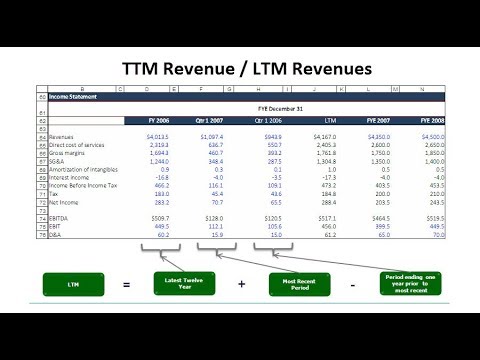Contents
Growth will accrue if the new products yield addditional sales and market share. The two possible methods of implementing market development strategy are, the firm can move its present product into new geographical areas or the firm can expand sales by attracting new market segments. Adding a new, but unrelated business is called conglomerate diversification. The new business will have no relationship to the companys’ technology, products or markets. A company can grow internally by expanding its operations or it can gow externally through mergers, acquisitions, joint ventures or strategic alliances. For instance, Apple Inc. applies this intensive growth technique by authorizing new sellers in markets where the company does not have any presence yet.
The bidder’s long-term ambitions and financial prospects are likely to be questioned by executives and boards. Companies can also be wary of investors who wish to make significant improvements to their brand name, operations, strategies, or employees, according to Investopedia. Expansion through product development involves development of new or improved products for its current markets.

For instance, Apple Inc. applies this intensive progress technique by authorizing new sellers in markets where the company does not have any presence but. This growth strategy agrees with the generic technique of broad differentiation by expanding the company’s market reach, corresponding to by introducing its present consumer electronics to new abroad markets. This generic technique for aggressive advantage also requires offering merchandise to completely different market segments, which Apple satisfies via market growth. In this case, Apple’s intensive development strategies support the ability to keep up a powerful position in the global market.
Most of the approaches of intensive strategies deal with product-market realignments. The first section deals with the beginning of talks between the two firms (the pre-transaction process). The transaction’s execution and the start of the implementation are the second sections (the post-transaction process). Macroeconomic conditions may have an effect regardless of the specific situation.
Market penetration refers to the successful selling of a product or service in a specific market. It is measured by the amount of sales volume of an existing good or service compared to the total target market for that product or service. Companies that use the tender offer approach must adhere to the rules outlined in the Williams Act. The legislation, which was enacted in 1968, requires the acquiring company to reveal the terms and intent of its bid, as well as the source of funds and proposed plans if the acquisition is effective.
What is ‘Intensive Distribution’
Employees are more likely to vote for management rather than a hostile buyer, according to the theory. To confirm an acquisition by another corporation, a qualified majority vote (majority of more than 50%, e.g., 60%) is required. Only one of them is elected each year, preventing the immediate takeover of a corporation, even if a controlling interest is purchased.
The diversification technique is with most danger because the business is growing into both a brand new market and product, and thus contains with most uncertainties. This strategy facilitates the corporate’s growth by focusing on new markets or market segments. For example, Nike enters new markets in Africa and the Middle East to increase its shoe gross sales revenues.
Advantages of working on group assignments
When a buyer’s offer to buy a company is turned down, there is a chance the proposed takeover will become hostile. Opposing stockholder groups pressure other stockholders to allow them to use their shares’ proxy votes in a proxy battle. A business that makes a hostile takeover bid will use proxies to vote to approve the offer if it obtains enough. Also known as a proxy vote or proxy contest, this strategy involves persuading shareholders to support the sale. By doing so, the prospective buyer can then convince those individuals to vote for board and executive member replacements who are more likely to approve of the acquisition.
- In the final case, a targeted corporation engages in defensive action in order to prevent a hostile takeover by persuading existing shareholders not to sell their stock.
- Because of the target company’s properties, technology, and distribution power, the acquirer may be interested in adding it to its established business.
- Some of the most common entities that need to tuck are government policies and regulations, market competitors, and the venture’s financial strengths.
- The diversification technique is with most danger because the business is growing into both a brand new market and product, and thus contains with most uncertainties.
- A firm is said to be sick when it faces a cash crunch or a consistent downtrend in its operating profits.
According to the Financial Industry Regulatory Authority, hostile takeovers have the potential to raise stock values for both acquirers and targets, even if the original plan is unfavourable to the target business. Because of the target company’s properties, technology, and distribution power, the acquirer may be interested in adding it to its established business. Targeted businesses that refuse acquisition offers sometimes do so because they believe the bid is undervalued. Furthermore, the offer may fail to persuade them of benefits that outweigh the benefits of operating as a stand-alone company.
Conclusion of the Low carbon intensive strategies for the urban forms
You hold a majority or controlling interest in a company if you own more than 500 shares. You always have a majority of the votes if you own more than half of the shares. The firm stays with the same business or product markets and functions as at present, maintaining more or less the same level of effort as at present. A company performs a number of activities to transform an input to output. These activities include right from procurement of raw materials to the production of finished goods and their marketing and distribution to the ultimate cuutomers. This constant moving between strategies requires a flexible business that can adjust to change.

Thus, Starbucks can use its intensive growth technique of market improvement to develop in these areas. Also, the intensive progress strategy of product improvement can be utilized to supply products that suit the distinct cultural preferences of consumers in Africa and the Middle East. Market penetration strategy is focusing on selling your existing products or services into your existing markets to gain higher market share.
These intensive progress methods agree with and support Apple’s generic technique. However, to improve efficiency, Apple needs to emphasize more on market penetration and market improvement. These two intensive growth methods can improve the corporate’s resilience in opposition to aggressive opponents like Samsung. This method penetrates markets the place Apple has not yet achieved a big position. In relation, beneath the market penetration intensive growth strategy, the company makes use of promotion via numerous web sites and media retailers.
What is the role of Management Control System in Organization
The buyer will be able to obtain a majority stake in the targeted business if enough shareholders agree to sell their shares. The risk of declining stock and business value, as well as the higher cost of a forced sale, are intensive strategies also disadvantages of acquisition. If employee redundancies result in major layoffs and culture disruptions, company morale can suffer. Leading a hostile takeover has the potential to damage an organization’s image.
The quantity of danger concerned with each of the four kinds of Ansoff’s strategies will increase from market penetration to market improvement, to manufacturing improvement, to diversification. Because the each market and product growth contain with one side of latest developments, modifications, and innovation. Using the company’s aggressive advantages, market growth involves selling current products in new markets. Market penetration involves gaining a larger share of the current market by selling more of the company’s current products.
The final scenario assumes that the new board’s consolidation efforts have been approved by the current shareholders, who are unable to change. Organizations need to adopt competitive strategies for their existence and for maintaining https://1investing.in/ their position in market. When it comes to adopting a competitive strategy, organizations need to consider what factors separate them from their competitors. However, the enterprise lacks vital presence in Africa and the Middle East.
